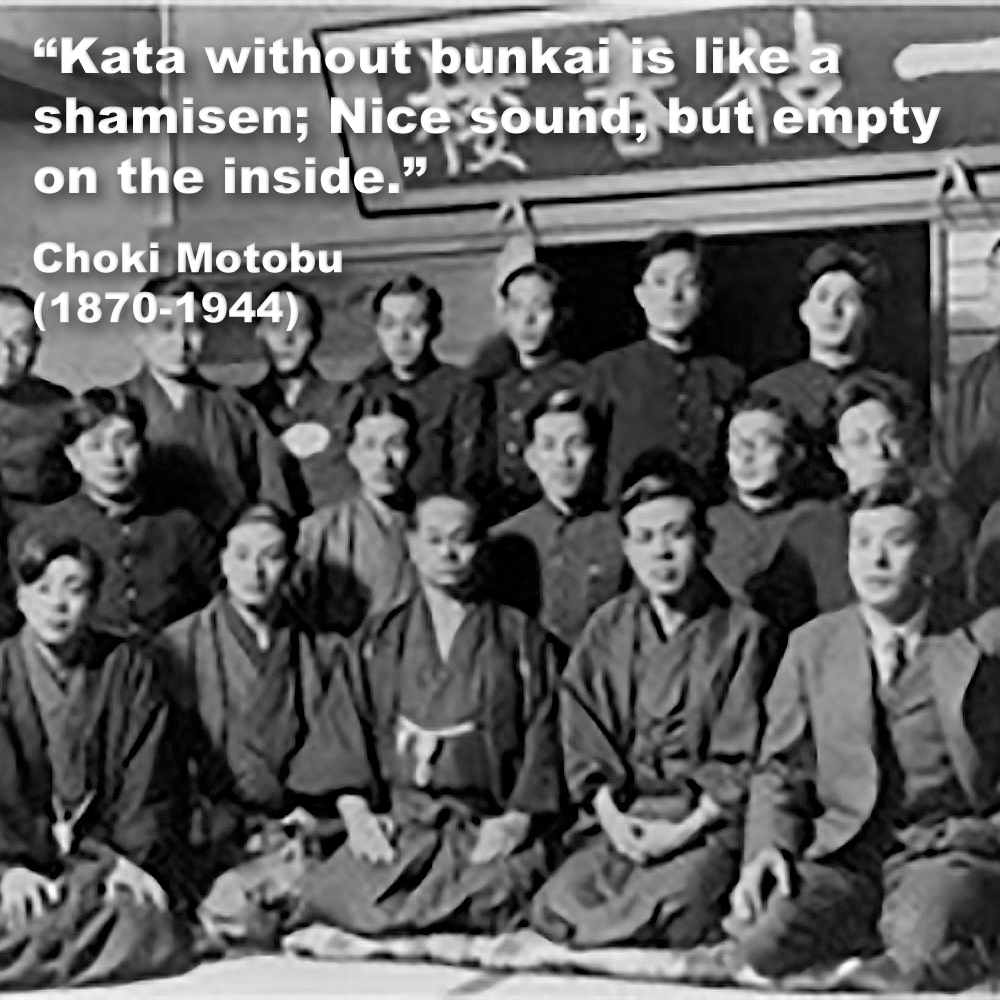
(2 minute read)
A comment on one of my articles stating, “I don’t believe in bunkai,” sparked a heated conversation and many comments, about its fundamental role in karate.
.
Such disregard reflects a misunderstanding of the art itself.
.
What is Bunkai and why is it necessary?
.
Bunkai (分解), literally translating to “analysis” or “disassembly,” refers to the process of deconstructing kata to extract combat applications and principles embedded within its movements. These extracted techniques are known as ‘oyo’.
.
It’s crucial to recognize that bunkai is not a specific technique but an analytical process. Applying the insights gleaned from this process is what constitutes ‘oyo’.
.
Passion for any pursuit, including martial arts, often stems from a desire for a deeper understanding and appreciation of its historical context. This begs the question: why were kata created?
.
It’s no surprise that the creators of traditional karate styles were real-world tested. Their lives demanded practical defensive skills, making the acquisition of effective techniques paramount.
.
Knowing this, wouldn’t it be logical to assume that they wouldn’t create forms and methods devoid of practical application?
.
The answer is clear: every element within a traditional kata holds the potential for self-defense application. However, over time, misunderstandings have arisen, leading some to disbelieve in the relevance of kata and its analysis.
.
Unfortunately, kata practice has often become overly ritualized, with some training methods neglecting its practical applications. The once highly functional art of self-protection has, in some cases, evolved into a competition-focused activity seemingly detached from its original purpose.
.
Historical evidence reveals that combative drills and partnered practice (the bunkai and oyo) were the foundation upon which kata, the solo memorization tool, was built.
.
Kata was never intended to be a solitary exercise, but rather a complement to practical training methods.
.
Why is kata, bunkai and oyo still necessary?
.
Kata with all its functionality remains crucial because they serve as a bridge connecting karate to its functional origins: self-defense. By reconnecting with this foundation, we can ensure that the knowledge and skills embedded within these traditional methods are preserved and continue to evolve.
.
While the specific scenarios faced by karate’s founders may no longer be quite so prevalent, kata and its application practices remain essential for practitioners. It helps us preserve the art’s legacy, the history of its creators – and adapting it to modern threats, helps us develop versatile self-defense skills, and combined with modern training methods, it provides a well-rounded approach to developing both technical proficiency and conceptual understanding.
.
In essence, while the specific applications might evolve, the core value of kata and its application practices remain, all as relevant today as they were many years ago.
.
Self-defense applications already lay encoded within the traditional kata. Through dedicated practice, and an open mind, we can unlock these hidden applications, allowing us to refine and adapt them, ensuring this vital knowledge continues to evolve and serve future generations.
.
“One cannot understand the true meaning of something without putting it into practice.” – Choki Motobu (1870-1944)
.
